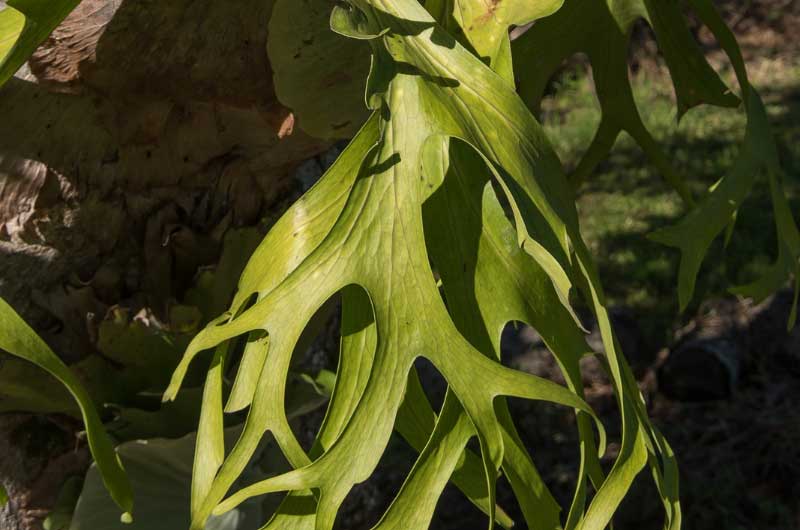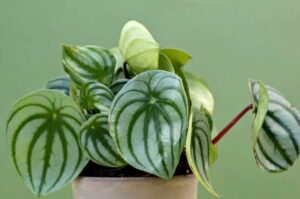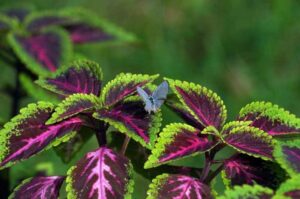Why Does My Staghorn Fern Have No Shield Frond?
The Staghorn fern has fronds (leaf-like structures) that are the main way it gets energy. The individual fronds can be very large and have a costa central ridge. Fronds are modified, sterile leaves that grow from the plant’s rhizome or central stem.
A Staghorn fern’s shield frond is the leaf that sits on top of its crown, which is where all the other leaves are positioned. This frond can be green or brown, depending on your climate.
If your Staghorn fern does not have a shield frond, it is simply because it could have fallen off or died. The pup or offspring of a Staghorn fern doesn’t require shield fronds initially, provided they have a good root system. If you provide good light and fertilizing /watering, the new shield fronds will grow, but it will take a few months to appear.
Shield fronds play an important role in protecting your Staghorn fern from excess sunlight and shading any invasive nearby plants.

The shield fronds can be large or small, depending on the size of the plant, and may look like a small leaf or like a whole new plant itself.
What is a shield frond?
All plants need to protect their new growth from drying out as they establish themselves. Shield fronds are specialized leaves that wrap around young Staghorn ferns to form a protective “shield,” keeping them moist and attracting insects that can help fertilize them.
Staghorn ferns have two or three shield fronds, depending on how old they are; the first set is typically lost after about six months, but some varieties have been known to keep a second set for several years.
A Staghorn fern will have one or more sterile shield fronds. They can be large or small, depending on the size of the plant, and may look like a small leaf or like a whole new plant itself. A fern with no shield frond is not a Staghorn fern.
How is shield front helpful to your Staghorn fern?
- The Staghorn fern also features a “shield” frond—a modified, sterile leaf in which photosynthesis occurs, and food is produced for other parts of the plant.
- Shield fronds are sterile; they do not produce spores. The shield fronds are located in the center of the plant and protect the new fertile fronds developing on the plant. The shield frond is also used to keep these developing fronds moist as they grow towards maturity.
How to protect your Staghorn fern shield frond?
Here are a few tips to protect your Staghorn shield frond
- If your Staghorn fern is indoors and you want to keep it healthy for as long as possible, make sure there’s no bright light shining directly on the plant—it should only receive indirect sunlight most times during the day (or grow lights if you want).
- Ensure there aren’t any other plants around that could compete with your Staghorn by stealing nutrients from its roots or blocking light from reaching them. These include ivies and hibiscus bushes specifically and others whose leaves tend to grow close together like Philodendron shrubs.
Staghorn doesn’t have true roots like most plants.
Staghorn ferns have modified roots, so they do not have true roots. A true root is a part of the plant that grows underground and absorbs nutrients from the soil.
The Staghorn does not have any of these. But it has modified roots above ground, which means that they look like leaves but do not absorb nutrients from the soil as most plants do.
Instead, they have root-like structures called “modified roots,” which are important for anchoring the plant to its mounting material and absorbing moisture and nutrients from the air. These modified roots are not true roots. These modified roots look like little discs and can be easily seen when examining a healthy Staghorn fern in your home or office.
Why are Staghorns called epiphytes?
Staghorn ferns are also called epiphytes because they don’t get their nutrients from the ground; instead, they get them directly from their environment through moisture in air or water. The modified roots that appear as a disc and are brown in color also absorb moisture for the fern.
How can you propagate Staghorn fern?
You can propagate Staghorn fern by division or through spores. You can conveniently divide mature and large ferns into small plants. Or you can even take small ‘chunks’ with a leaf and a small root ball and plant them individually.
Provide these new plants with moist and warm conditions to help them survive. They’ll slowly grow into mature plants. But don’t get disheartened if they don’t survive because it takes a bit of practice to propagate them.
Conclusion
This article gives you deep insight into Staghorn fern shield fronds, their function, and protection. Remember not to be overly concerned about either the plant’s growth or shield fronds. If you take appropriate care of your fern, it will likely complete its life cycle naturally. Keep misting it frequently, and give it a good soak when it looks completely dry.
Happy Gardening!






